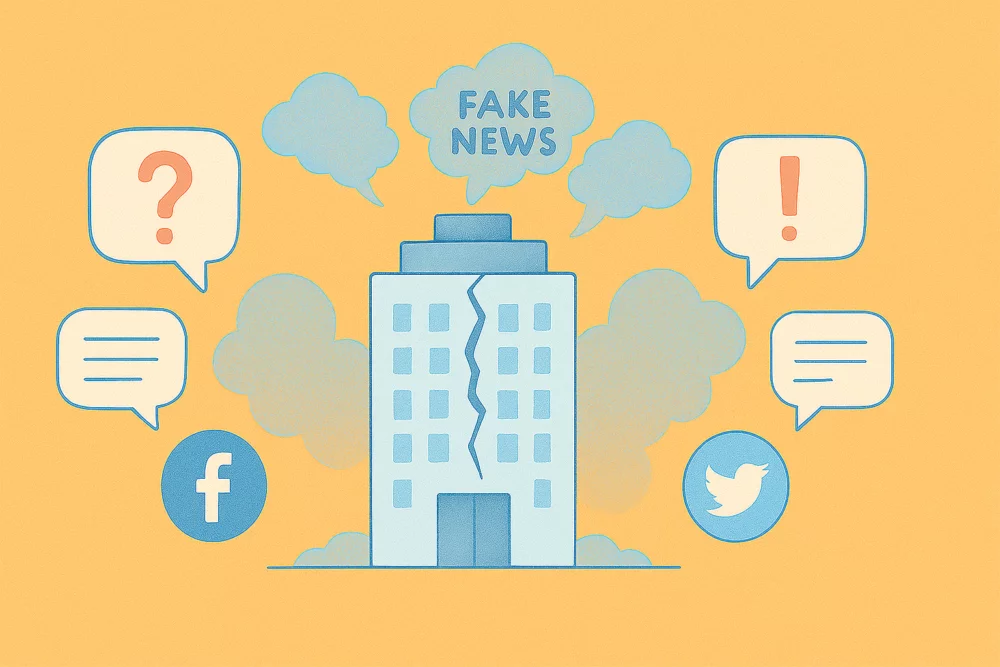This strategy is part of "personal branding". It means “managing and promoting one’s personal image, as a brand would”, explains Eve Gimenez, expert in corporate PR, personal branding, and crisis communication. “Concretely, it’s about communicating one’s story, values, vision, and expertise. Applied to executives, this strategy can serve the company by aligning the spokesperson’s personal image with the one of the brand.”
The concept of embodied communication has existed for many years, but it has now become an indispensable tool in communication strategies. For Karine Rameau, founder and director of the KRP agency, “a company can no longer communicate without showing who is behind it.” The observation is clear: executives are speaking out more and more, particularly on social networks such as LinkedIn. To name just a few, Michel-Edouard Leclerc (E. Leclerc) has 523k followers on LinkedIn, Anthony Bourbon (Blast Club) 544k, and Alexandre Bompard (Carrefour) 215k. Today, 82% are convinced of the benefits of actively using the platform for their reputation, according to the 2023 Digital Impact Score (FTI Consulting). The study shows that their accounts generate an engagement rate 36% higher than corporate accounts.
The rise of social media as a lever for "personal branding" raises the question: do public relations still have a role to play? And if so, how should these strategies be articulated?
Social networks vs. public relations?
In an opinion piece published in Stratégies last June, Eve Gimenez denounced the “forgotten role of PR in personal branding.” KRP’s director confirms: “It’s true that social networks have overtaken public relations.”Yet, the experts interviewed are unanimous: the two levers are complementary. The balance between them, however, is not fixed. Obviously, the choice is directly tied to the industry sector and the type of target audience. “In some industries, visibility on social networks is very important”, recalls Yasmine Douadi, “and the issues are not the same between a B2B platform like LinkedIn, or Instagram.” There is also a question of timing. “LinkedIn offers more opportunities to get short-term results”, explains Manon Beau, managing director of the agency Le Surligneur. “The platform ensures quick visibility, whereas public relations tend to deliver results over the long term.”
The communications expert qualifies: “I don’t think PR has been forgotten, it’s simply more difficult for an executive to put into place.” In contrast, the strength of social networks lies in their accessibility. Anyone can speak immediately while keeping full control of their message. “It is time-consuming”, acknowledges Eve Gimenez, “but PR remains a winning bet in the long run.”
A virtuous circle
Many executives instinctively turn to LinkedIn. Karine Rameau observes this among her clients: “Okay, they have their community that follows them, but they don’t have the credibility brought by the media. And that remains indispensable.”Writing opinion pieces, giving interviews, taking part in conferences, appearing on TV shows, or in podcasts… these are all concrete ways to carry out "personal branding" actions through the media. Visibility is then multiplied, as Riskintel Media’s CEO explains: “Beyond amplifying the messages I promote on cybersecurity, which must be established as a societal issue, obtaining coverage in certain media outlets adds more value to my words by broadcasting them to a new audience.” The impact of media coverage is not the same as a social media post. “I managed to get a 6-page feature in Les Echos Week-End for one of my clients. Afterwards, interview requests multiplied”, recalls Eve Gimenez.
The advantage, according to Manon Beau, is that "personal branding" levers reinforce each other. “Media coverage can be highlighted on LinkedIn. Conversely, a good social media post can lead a journalist to contact you. The goal is to create a 360° strategy”, explains Le Surligneur’s managing director.
In the eyes of many executives, personal branding in the media still seems like an inaccessible strategy, too often associated with CAC 40 leaders.
The essentials: engagement and authenticity
The main obstacle to implement a "personal branding" strategy is self-censorship. “You shouldn’t hold yourself back or be afraid of looking ridiculous”, advises Yasmine Douadi, “because today, it’s the best way for small businesses or entrepreneurs to grow.” Especially in highly competitive markets, one has to be able to stand out by speaking up. Karine Rameau insists: “You need a CEO who shares information. The worst is a lack of transparency.”But how can one make their voice heard in a world where everyone is speaking? The latest report by the agency Saper Vedere provides insights for standing out. One is to take a stance on societal issues and go beyond corporate matters. “The study shows very clearly that you need the audacity to weigh in on broader topics and engage. Ecological transition, innovation, or employment can be examples”, summarizes Eve Gimenez, “but beware of issues that are too political or too far removed from one’s field of expertise.”
It was with this in mind that Karine Rameau supported Corinne Jolly, CEO of PAP (Particulier à Particulier), during the pandemic. “She chose to launch an initiative to provide housing for healthcare workers. I publicized it, and since it was one of the first companies to get involved at that time, we obtained strong media coverage.”
However, Eve Gimenez warns that PR in personal branding “must not become an ego issue; the goal must remain business.” Yasmine Douadi adds: “One should avoid speaking out on topics they don’t master.”
Finally, the main recommendation is above all to remain authentic. “You should try to show who you really are: that means sharing both successes and difficulties”, adds Manon Beau. “It’s the leader’s distinct features, their story, and their values that shape a personal branding strategy.”





![MEDIA ON THE MOVE – Summer Series – Finding your digital path [3/3]](https://mediaconnect.com/wp-content/uploads/2025/08/59487-1000x563.jpg.webp)

